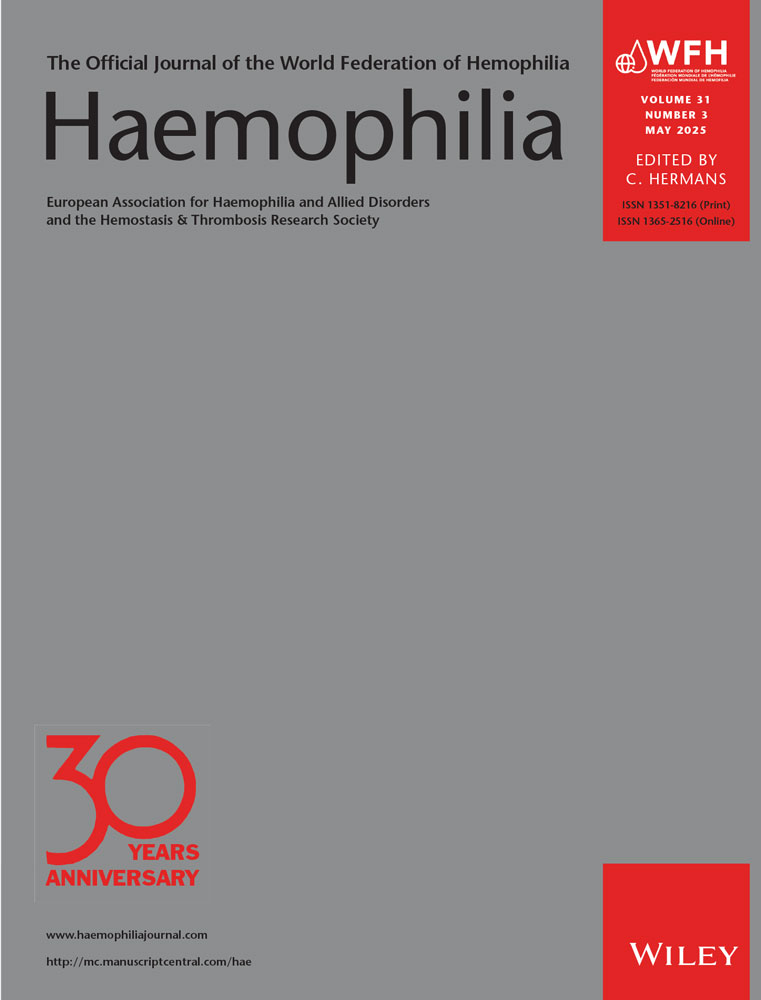The Iron Ladies: Prevalence and Risk Factors of Iron Deficiency in Females With Bleeding Disorders
Funding: This research was supported by the HRSA Federal Hemophilia Treatment Center Grant (H30MC24050-04-00).
ABSTRACT
Introduction
Iron deficiency (ID) impairs cognitive and physical function. Females with bleeding disorders (FBD) are at risk of ID as a result of bleeding symptoms.
Aim
This study aimed to report the overall incidence and prevalence of ID in FBD, identify factors associated with ID and describe the screening practices for and management of ID within haemophilia treatment centres (HTC).
Methods
Electronic surveys were distributed to medical providers caring for FBD within HTCs participating in the American Thrombosis Haemostasis (ATHN) affiliate network to gather data on practices for screening of ID and the use of iron supplementation. We next used the ATHNdataset to identify females 13–40 years of age receiving care at an ATHN-affiliated HTC between 2015 and 2019. Prevalence and incidence of ID were estimated based on the presence of one of the following lab results: transferrin >360 mg/dL, total iron binding capacity (TIBC) >460mcg/dL, % saturation <20% or ferritin <50 ng/mL, and clinical and demographic characteristics associated with ID were identified using logistic regression.
Results
Although all providers reported screening for ID, only 70% did so as part of their routine practice and significant variation existed in the form of iron supplementation used. Only 3.6% of participants in the ATHNdataset were tested for ID, and 71.9% of tested participants were ID. Black or African American race, platelet disorder and heavy menstrual bleeding were associated with increased risk of ID.
Conclusion
ID is highly prevalent among FBD and is underrecognised and undertreated. Practitioners should standardise practices to identify and manage ID.
Conflicts of Interest
Meghan McCormick has acted as a consultant to Servier Pharmaceuticals. Margaret V. Ragni has received research funding from BioMarin, Sanofi, SPARK and Takeda and has served on advisory boards of BeBio, BioMarin, Hema Biologics, Sanofi, SPARK and Takeda. Tammuella Chrisentery-Singleton has acted as a paid consultant with Octapharma, Bayer, Novo-Nordisk, CSL Behring, Kedrion, Genentech, BioMarin, Takeda, Hema Biologics and Pfizer. She has received honoraria from Octapharma, Hema Biologics, Genentech, BioMarin, Novo-Nordisk, CSL Behring, Takeda, Grifols and Pfizer. She participates in GBT/Pfizer Advisory Board and is a leader for nMAC—Make a Wish and American Heart Association—New Orleans.
Open Research
Data Availability Statement
The data that support the findings of this study originate from the ATHNdataset and are available from the American Thrombosis and Hemostasis Network (ATHN). Restrictions apply to the availability of these data. Data inquiries can be made by emailing ATHN at [email protected]. Survey data available upon request from the authors.




